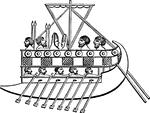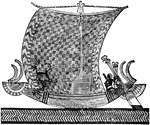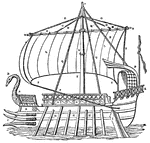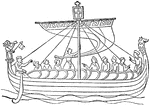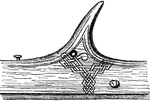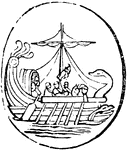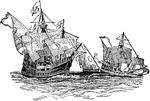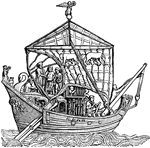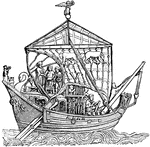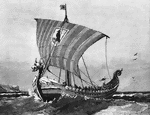Ancient Ships
The Ancient Ships ClipArt gallery offers 50 images of ships that were used in ancient times, mostly for the purpose of war.
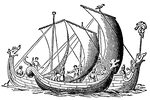
Anglo-Saxon Ships with Wind in the Sails
A fleet of three ancient Anglo-Saxon ships, each with wind filling the lone sail. Each ship has a dragon…
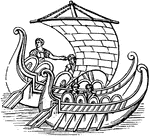
Antenna
"The yard of a ship. The ships of the ancients had a single mast in the middle, and a square sail, to…

Antenna
"The yard of a ship. The ships of the ancients had a single mast in the middle, and a square sail, to…
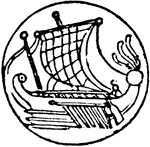
Antenna
"The yard of a ship. The ships of the ancients had a single mast in the middle, and a square sail, to…
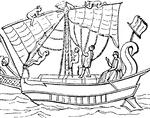
Greek Boat
"The masts were usually taken down when the vessel arrived in port, and raised again when it was about…

Two Egyptian Boats
"Two boats moored to the bank of the river by ropes and stakes. In the cabin of one, a man inflicts…
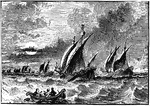
Fourteenth Century Ships
In the 14th and 15th centuries seamen's guilds were formed in Bristol, King's Lynn, Grimsby, Hull, York…

Galley (ship)
A Galley is a low, flat-built vessel furnished with one deck.It was primarily employed by the Romans,…

Remains of the Viking Ship Gokstad
"Remains of the Viking ships of Gokstad, after its removal from the mound where it was found."—Gordy,…

Greek War-Ship with Three Rows of Oars
Illustration of a Greek war-ship from the 5th century BC. There are two masts, a large decorative bird…

Marcus Aurelius Antoninus
A medal engraved with the head of Marcus Aurelius Antoninus, with his name in the inscription. On the…
Norse Boat Unearthed at Sandefjord
One of the most important remains from the Viking age was found at the grave site Gokstadhaugen in Sandefjord.…
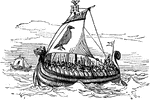
Norse Galley
An illustration of a Norse Galley. Norse is an adjective relating things to Norway, Denmark, Faroe Islands,…

The Remains of the Prow of the Viking Ship Gokstad
The ship is pictured as it looked shortly after being unearthed. The tent-like structure at the back…
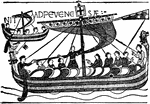
A Ship of Duke William's Fleet
"A ship of Duke William's fleet which transported troops for the invasion of England."—Gordy,…

A Viking Ship
"It was the custom of Northmen to bury their dead sea king near the sea in his ship and over the spot…
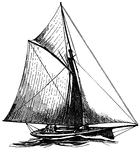
Sloop
"A small fore-and-aft rigged vessel with one mast, generally carrying a jib, fore-staysail, mainsail,…

Fourteenth Century War Vessel and Barge
A fourteenth century war vessel with two masts and barge used to transport soldiers. Most fourteenth…

